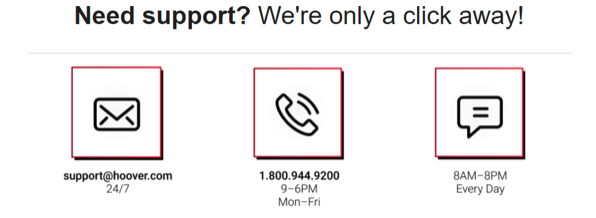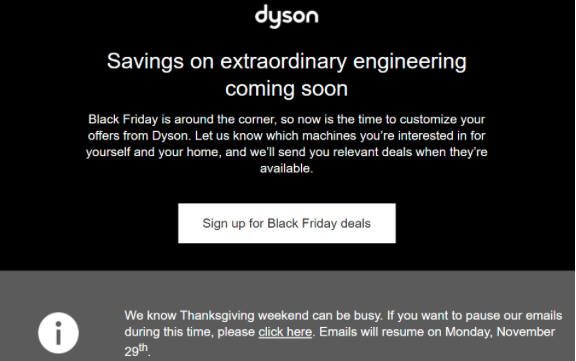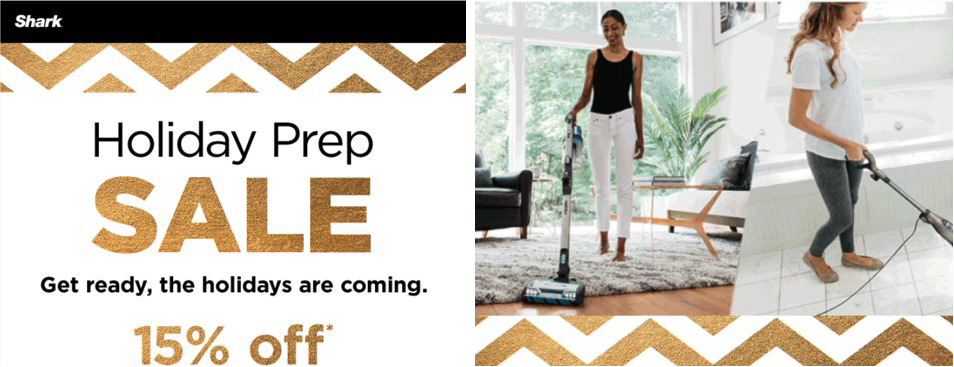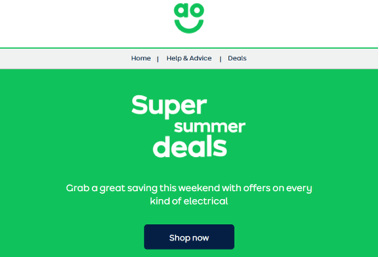Brands in the consumer appliances sector weathered the COVID-19 pandemic relatively well—especially those with a strong online presence.
For example, UK online retailer AO World saw sales increase by over 60 percent in 2020, and is now pouring those profits into improving their brand awareness and conversion rates. Research suggests that brands like AO will encounter a receptive audience this holiday season as the world sputters back into life post-pandemic.
Shoppers are expected to start “splashing the cash,” propelled by the money they saved during lockdowns. In the UK alone, households saved £220 billion since the onset of COVID-19. In the US, stimulus checks, rising stock markets, and fewer spending choices helped citizens save about $3.7 trillion.
Expect email to remain a strong channel
To continue their strong performance, consumer appliance retailers should seek ways to optimize their marketing programs now. Since email drove 20 percent of holiday web traffic in 2020, this channel should be a priority.
But this year’s peak sales season won’t be smooth sailing for email senders. According to Validity’s data, global email volumes are at record levels, making maintaining good deliverability difficult. Competition for eyes in the inbox—and share of wallet—will be brutal.
As we examine how consumer appliance brands can ramp up their email marketing programs, let’s take a look at Validity’s research into the typical email profile for this sector:
Consumer appliances: 10 quick stats
- Subscribers receive an average 3.3 emails per week.
- Fridays are the most popular send days, accounting for almost one-fifth of total traffic.
- The most popular send time is between 8 a.m. and 9 a.m.
- The average subject line length is 51 characters.
- Only 63 percent of emails are optimized for mobile.
- Sixteen percent of emails use subject line emojis. Nine percent use animated GIFs.
- Emails are typically image-heavy, with an average weight of 1,300kb.
- The average word count is just under 800 words per email.
- Over half of all emails (53 percent) contain product discounts.
- The most popular discount range is 70-80 percent, followed by 20-30 percent.
As we approach peak sales season, consumer appliances should follow these tips to position their email programs for success.
Times are changing
Email sending times are 3 hours later than last year on average. In the past, brands successfully targeted consumers during their morning commutes. But with many still working from home, commuter hours are less concrete. AO recognizes this shift and sends most emails at 6 p.m.
Unlike most consumer appliances senders, AO’s most active email days are Saturdays, on which they conduct 30 percent of their weekly activity. AO emails face minimal competitor activity on weekends, and their emails stand out in less congested inboxes.
Other brands should consider offsetting their scheduled sends in a similar way. Mailbox providers (MBPs) report 70 percent of all email volume is sent in the first 10 minutes of each hour, as senders nearly always schedule sends for the top of the hour. By starting their broadcasts just 10 minutes earlier or later, senders can enjoy reduced competition and increased inbox visibility.
Good to be choosy
As peak sales season grows longer, Black Friday now seems more like Black November. Managing subscriber fatigue is now a major challenge, especially due to downward pressure on deliverability.
The added complication of Apple’s Mail Privacy Protection (MPP) means senders must find new ways to let subscribers share their communication preferences in ways that don’t damage program performance.
Promoting your preference center is a good starting point. Especially as MPP degrades the open rate signal, using other approaches to source first-party data for segmentation and targeting is even more important.

Brands need to understand how consumers respond to email offers in ways other than clicks. This year’s DMA Consumer Email Tracker report (sponsored by Validity) revealed that email spurs many other engagement actions. After receiving a marketing email, recipients might write a product review, post on social media, phone customer service, or visit a brick-and-mortar store. Appliances brand Hoover makes these different engagement routes accessible in their emails.

Subscribers may want different communication options during high-volume sending periods. They may only want offers for certain products, or want a temporary break from promotions that don’t pique their interest. Dyson’s subscribers can specify which promotions they’d like to receive, or “snooze” their inboxes if they don’t want any Black Friday promotions.

Remember: It’s better to lose subscribers rather than receive a spam complaint. Include unsubscribe links in the email header, where they are more likely to be selected as the preferred option by those who no longer want emails.

All about image
Countdown timers and animated GIFs are effective engagement drivers but make emails heavier. The average image weight of consumer appliances emails is ± 1,300kb, well above the recommended 800kb threshold. Shark’s emails (below) are an average 3,400kb—over four times the recommended maximum. This creates an increased spam filtering risk due to low text-to-image ratios.
This also creates a latency risk: Subscriber engagement is determined during the first eight seconds of opening an email. Recipients won’t engage with your emails if they spend this time waiting for images to load.

Think allowed
Especially during peak-sales season, it’s vital for MBPs to see your email programs as best in class. Even the biggest MBPs have finite bandwidth and processing capacity, so they make throttling and inbox placement decisions based on senders’ reputations. An excellent way to achieve a better sender reputation is through Validity’s Sender Certification program, the world’s most recognized email allow list. Partnerships with over 100 global MBPs mean accredited brands like Currys enjoy near-100 percent inbox placement rates.

Many of the world’s biggest spam filtering companies recognize Certification. For example, Spam Assassin generates a spam score on a scale of -10 to +10, but accredited senders’ scores are discounted (Currys’ average score is -6.4). This provides much greater flexibility when using effective mail elements that might trigger spam filtering rules.
This year’s peak sales season presents unique challenges and opportunities for consumer appliances businesses. By implementing innovative strategies like the above, they can maximize their email performance well beyond peak sales season.
Learn more about the appliance of email science and how to optimize your email programs by watching the latest edition of our renowned State of Email Live webinar series.
